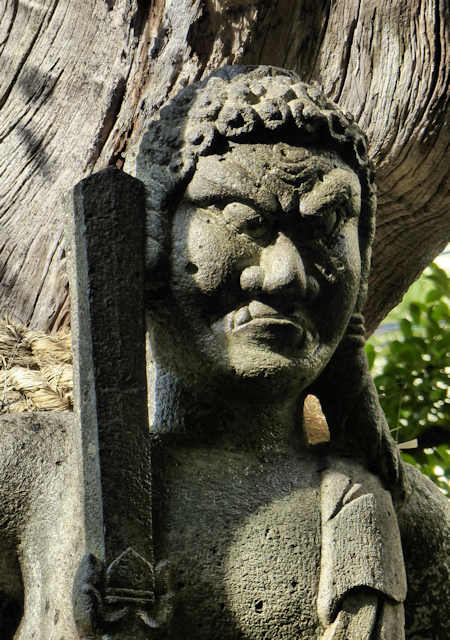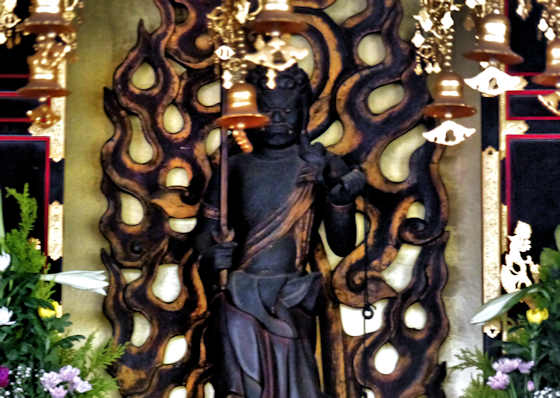Raion-ji Hagio Yakushi-do
After leaving
Kannonzaka Kannondo, temple 66 on the Sasaguri pilgrimage, the route heads up the mountain valley for about 3 kilometers before reaching the next temple, actually a cluster of three, in the mountain settlement of Hagio.
What is remarkable about that is that the first three kilometers of the pilgrimage, as far as Kanninzaka, included a full 12 temples.
The route sometimes followed the narrow mountain road, and sometimes a trail through the forest including some decent bamboo groves.
Around Hagio, none of the three temples were large. There was temple 49, Raionji, temple 76, Hagio Yakushido, and temple 47, Hagio Amidado.
There were, however, just like the other small temples so far, a lot of statues, especially of Fudo Myo.
Raionji was the largest, and this is the main statue, a Shaka Nyorai, the "historical Buddha".
Raionji also has this nice thousand-armed Kannon,....
... and several nice Fudo....
The Yakushi-do obviously enshrines Yakushi Nyorai, the Medicine Buddha...
And the Amida-do's main statue is an Amida....
The Sasaguri pilgrimage is an excellent opportunity to both get a taster of what walking a pilgrimage is like, and also an excellent series of mountain walks close to the big city of Fukuoka.
Ema Votive Plaques































































